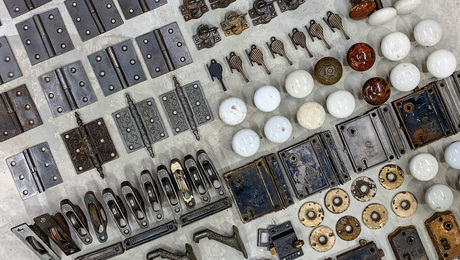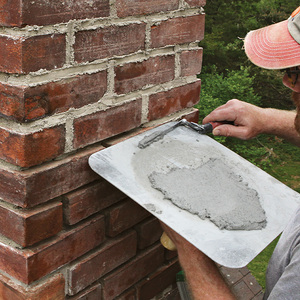Is there a problem tapping in to a switch which has 14 gauge wire running to it with 12 gauge wire running to a new outlet?
I prefer to use 12 gauge everywhere, to allow upgrading circuits from 15 to 20 amp later. So I have plenty of 12 gauge wire. I know there would be no advantage, other than being able to use the plentiful wire I already have, but that’s an advantage to me, rather than buying two gauges.
Anyway, I’m adding this new outlet, grabbing power from a nearby lightswitch, and that switch has 14 gauge wire running to it. It seems like there shouldn’t be a problem, as the 12 gauge should have less resistance, but a friend who knows more than me told me that I would experience a loss of power to the outlets by using the 12 gauge.
Is this true? Any other problems with this?
Thanks, Brian



















Replies
You might get a raised eyebrow from an AHJ or worse, and then you allways run the risk that someone down the line will see the 12 AWG, and then go back and switch out a 20 amp breaker for a 15 'cause he thinks the whole circuit is wired for 20 amp, but otherwise, I don't think there's any functional reason for not doing this.
not an electrician here, but an opinion anyway.
you will not lose any "power" with the connection.
you may have a code situation because if someone looks at the recepticle with 12 ga on it they may think it is a 20 amp circuit.
hopefully an electrrician will be along shortly.
_____________________________
bobl Volo, non valeo
"but a friend who knows more than me told me that I would experience a loss of power to the outlets by using the 12 gauge."
In that case don't touch the electricity.
He don't know sh*t and if you know less than him <G>.
Wire is run over size on purpose all the time. The two main reasons are to allow for voltage drop on long runs and where the ampactiy of the wire has to be derated because of tempature or bundling multiple wires/cables.
The only operational problem you might run into is that you might need a big box. Box sizing is based on the size of the wire uses.
But Bill, wouldn't the electricty beyond the switch "slow down" because of the larger "pipeline"?
Noboby wants slow electricity. Clocks loose time, motors run slower, almost like a mini time warp, right?
<g>
PJ
Whatever you can do or dream you can, Begin it Boldness has genius, power, and magic in it. Goethe
that's why u slope the wire down towords the next box.gravity will make up the difference._____________________________
bobl Volo, non valeo
And that's why there are electric pumps. If you mis-wire a two story house from the bottom up instead the top down, you need to pump the electric into the second floor or risk a low voltage condition.
PJ
Whatever you can do or dream you can, Begin it Boldness has genius, power, and magic in it. Goethe
I thought I was the only one who knew about the "electricity pumps". I cant tell you how many times they've saved my butt.
I've been studying a 13v version to improve the aerodynamic coefficient of automobiles and improve my s*x life.
PJ
Whatever you can do or dream you can, Begin it Boldness has genius, power, and magic in it. Goethe
Warning: I am not an electrician, so these observations are put forward in the hope of gaining additional insights from others who are.
Brian, you might want to investigate whether this switch controls a ceiling light fixture, or whether it controls another receptacle (i.e., a switched receptacle). My experience, though limited, has taught me that a circuit extended from a switch box will not deliver full line voltage when the switch is on, for instance, when the ceiling fixture it controls is on - yet the receptacle works properly when the switch is off. Not sure why that is as it works when I diagram it out on paper...something to do with the neutral return perhaps.
Extending a circuit by pigtailing off an existing receptacle is a sure way to get results. Watch out for box-fill limitations - you might have to install a deeper box for the receptacle you're pigtailing from. Make sure your ground connections are continuous. Also make sure you do not create an overload situation: rule of thumb is never more than 12 receptacles on a 14/2 residential circuit.
Extending a 14gau circuit with 12gau wire is a definite code violation for the reasons mentioned by other BTers.
BTW, hiring an electrician would be a good idea. Split the cost with your friend ;) and you'll both learn something. Then report your findings here.
Warning: I am not an electrician.
There may be local code issues, but as far as I know there aren't any restrictions in the National Electric Code on how big the wire is, as long as it's big enough to handle the ampacity (I'm an electrical engineer.) In fact, I've had projects where I had to run 1/0 cable for a single 20 amp circuit, to prevent voltage drop because the receptacle was so far away from the source.
I agree that you may not find unswitched 120 volts in a switch box - quite often the 120VAC feed goes straight to the light in the ceiling, and then just the hot wire is looped back down to the switch. Take a look inside the switch cover first.
"In fact, I've had projects where I had to run 1/0 cable for a single 20 amp circuit, to prevent voltage drop because the receptacle was so far away from the source."Must have been fun job sticking that 1/0 in the receptacle backstab connectors.
Yup, that wouldn't work too well...I had to put a junction box next to the receptacle, where the electrician could then connect some #12 pigtails to the big wires and then run them in to the receptacle. A similar thing was done back at the breaker panel.
This was a project on a large landfill, where they needed power about 800 feet away from the source.
On another forum we went through the same thing to operate a gate opener at the end of a long driveway.Even went through some calcualtion using setup/setdown transforms.But he ended up finding a solar operated unit for a reasonable price.
"On another forum we went through the same thing to operate a gate opener at the end of a long driveway.
Even went through some calcualtion using setup/setdown transforms."
Yup, I've done that too, and in a lot of cases it's a better way. Step up the power to 480 at the beginning and step it back down to 120 at the end, and then the wire gets down to a more manageable size.
so electricity is running at 60 hz per second so by added a couple feet of 12gauge it will slow down to what maybe 59.99999999999999999999 per second. cmon guy. its just a code violation concern the breaker in the box. Its not base on power flow but power used. a single 40 watt light on end of 200 ft 15 amp cord is fine. But a well pump on 50 foot of 15 amp, something going get hot.
You're right. Electricity travels at the speed of light, which is a constant. Wire gauge does not affect this constant speed. Wire gauge does affect how many electrons are delivered downstream where they're supposed to do useful work, line creating a field strong enough to induce motion to a motor shaft. Different sized motors need more or fewer of these electrons. A high amperage motor will draw comparatively more electrons, therefore its wire feed must be bigger, so too the breaker that protects its circuit.
Larger gauge wires offer less resistance, therefore less heat is created as the electrons flow through on their way to the load. Bigger wires handle higher amp draws (loads) with less voltage drop-off, which is better for motors. And they're generally better suited to continuous rather than intermittent loads.
As others here have alluded, it is a good idea to lay out all wire runs to a constant 1/4" per foot drop. Steeper than that and the breakers will trip all the time.
> Extending a 14gau circuit with 12gau wire is a definite code violation for the reasons mentioned by other BTers.
No, it's not a code violation. If you have a 15 amp breaker or fuse feeding the circuit, you're free to mix 14 gauge, 12 gauge, 1000 MCM, whatever's at least 14.
It's a bad idea, but also not a violation, to have 12 for the home run on a 15 amp circuit. Someone in the future might swap the breaker up to 20 amps, creating a violation given that there's also some AWG 14 elsewhere on that circuit.
To pull a receptacle off an existing switch, you need to be able to identify the hot from the switch leg, and you need to be sure that you have access to the neutral. If this is conduit, you can run a new white wire down to the box for the neutral. If this is romex and just a switch drop from a ceiling light, you're SOL on the neutral.
You also have to be able to figure out box fill, and if adding a neutral to existing conduit, conduit fill.
A lot of what's been posted in this thread is obviously intended as humor. But some of what seems to be serious advice is dangerously wrong.
-- J.S.
You could always mark "15A ONLY" inside the cover plate of the receptical in red sharpie to avoid the future confusion due to the wire size.
...that's not a mistake, it's rustic